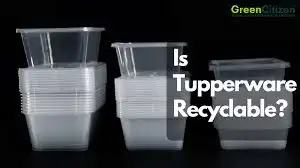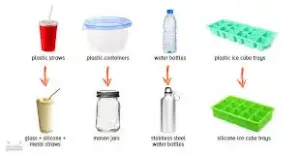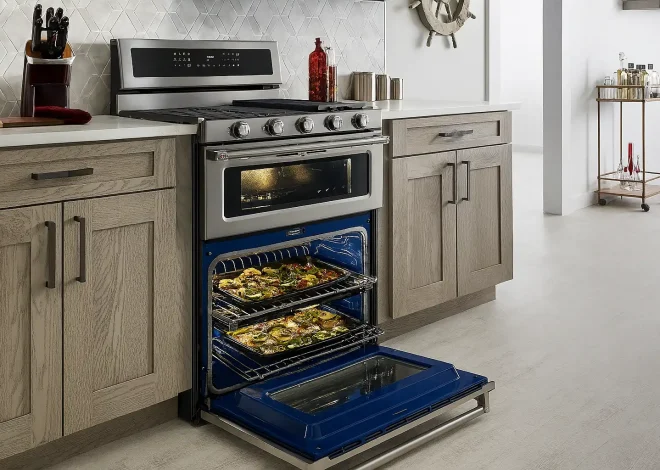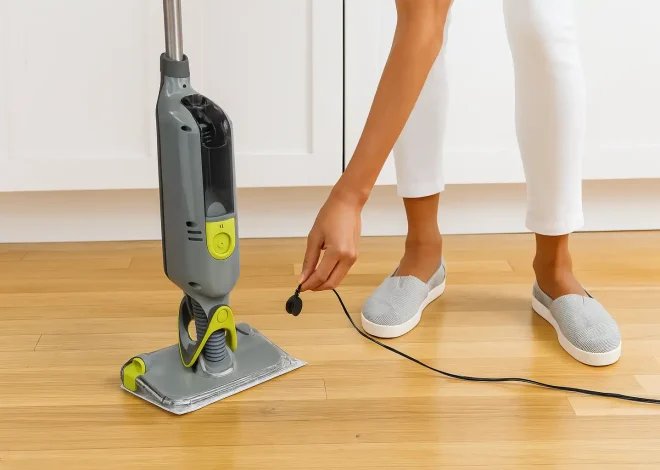
Recycling Guide for Plastic Tupperware Symbols
When I started paying attention to plastic Tupperware symbols, I was surprised by how much they told me. At first, I thought the plastic Tupperware symbols on containers were just random marks, but they’re actually super helpful. Whether I’m heating leftovers or packing lunch, I always check for the microwave safe plastic symbol or the freezer safe symbol, both of which are part of the plastic Tupperware symbols system.
One time, I didn’t notice the do not microwave symbol and ended up with a warped lid—that was when I truly understood the value of plastic Tupperware symbols and the need to heed manufacturer warnings. Since then, I’ve even helped friends decode their own containers by showing them how to read plastic Tupperware symbols properly.
Now, I always check for plastic Tupperware symbols before using any container. The cup and fork symbol tells me it’s food safe, while the triangle with a number inside is part of the plastic Tupperware symbols system that shows what kind of plastic the container is made of. Most of mine have the number “5,” which is one of the plastic Tupperware symbols meaning polypropylene (PP), a generally safe plastic for food use and accepted through curbside recycling.
I’ve even memorized a few codes—“1” is PET, “2” is HDPE—which has helped me understand plastic Tupperware symbols at a glance. Learning these plastic Tupperware symbols made it easier to know which containers are microwave- or dishwasher-safe, so I no longer guess—I choose smart and safe every time, especially when I need to reheat.
Understanding Plastic Container Symbols
If you’ve ever noticed the symbols on the bottom of plastic containers, you might have wondered what they all mean. These plastic Tupperware symbols aren’t just random—they provide important safety and recycling details that help you use your containers correctly, including heed manufacturer warnings.
Understanding plastic Tupperware symbols can tell you if the container is food-safe, microwave-safe, or recyclable. When I first started sorting my kitchen storage, I learned to rely on plastic Tupperware symbols to avoid using the wrong type of plastic. Many plastic Tupperware symbols also include numbers that match up with recycling codes, making it easier to dispose of them responsibly. Over time, getting familiar with plastic Tupperware symbols has helped me make smarter and safer choices for my home and the environment.
Plastic Tupperware symbols help you quickly understand how to use your containers safely. For example, the cup and fork symbol is a sign that the container is food-safe, while wavy lines indicate it’s microwave-safe, which is crucial for safe reheating. You’ll also spot a snowflake for freezer use and water droplets on dishes for dishwasher safety—both are important plastic Tupperware symbols to look for in everyday use, along with recycling labels that indicate their safety in various conditions.
Another key part of plastic Tupperware symbols is the triangle with a number inside it, which helps identify the type of plastic used in the houseware. This is the recycling symbol, which tells you what type of plastic the container is made from and how to dispose of it responsibly.
As someone who once overlooked these signs, I now rely on these plastic Tupperware symbols to keep my food safe and my recycling sorted correctly. Learning to read these plastic Tupperware symbols has truly made my kitchen smarter and more sustainable, especially when choosing every plastic container wisely and understanding the squiggly lines mean.
Okay, here’s your paragraph with the internal link to BestVouch.com added naturally:
These plastic Tupperware symbols on containers can seem confusing at first, but once you start recognizing them, they make a lot more sense. Learning to read plastic Tupperware symbols helps you store food safely and recycle responsibly, ensuring that you follow the guidelines on the recycling labels.
When I first paid attention to plastic Tupperware symbols, I realized how much safer my kitchen habits became, especially when considering the guidelines for use in the microwave. For more tips on smart shopping and finding the best deals on kitchen essentials, check out BestVouch.
These symbols aren’t just markings, they’re guides, and understanding plastic Tupperware symbols is key to using your containers wisely. So, whether you’re checking for microwave safety or recyclability, trust that plastic Tupperware symbols are your go-to reference.
What are Plastic Container Symbols?

When I first started paying attention to the symbols on plastic containers, especially those on my everyday Tupperware, I realized I had been overlooking some really useful information about recycling labels. These little graphics, the plastic container symbols on bottom, are more than just marks; they have important meanings. They give you clear safe use instructions so you know whether that container is okay for the microwave, freezer, dishwasher, or even for storing food in the first place, which is crucial for houseware safety.
For example, a cup and fork design means the container is food safe, and may also indicate it is made from polycarbonate. A snowflake stands for the freezer safe symbol, wavy lines signal a microwave safe symbol, and plates with water drops indicate the dishwasher safe symbol. Then there is the recycling symbol, which is often a triangle with a number inside.
This offers important recycling information about what type of plastic you’re dealing with. Once I learned to recognize these plastic tupperware symbols, I could easily decide how to use and dispose of my containers without guesswork. It’s a small habit, but it makes a big difference.
Why Plastic Tupperware Symbols Matter for Safe Use
When I started using plastic Tupperware, I didn’t pay much attention to the symbols on plastic containers, but understanding the meaning of symbols on plastic containers really changed my view.
These plastic Tupperware symbols, like the food safe symbol, microwave safe symbol, freezer safe symbol, and dishwasher safe symbol, help us know how to use each plastic container safely without harming our food or the container itself. Even the cup and fork design is key, showing that the container is safe to hold food.
These symbols also provide important safe use instructions and recycling information, including the recycling symbol, which tells you how to dispose of the container properly, like milk jugs. From my experience, paying attention to these small marks helps protect both your food and the environment. So always check those symbols before you use your Tupperware!
How to Recognize Plastic Tupperware Symbols and Their Meaning
When you look at symbols on the bottom of plastic containers, especially plastic Tupperware symbols, they tell you a lot about the type of plastic used. These plastic container symbols on bottom usually include a number in a triangle, known as the resin identification code, which helps you identify the material for recycling information and safe use instructions.
From my experience, paying attention to these symbols on plastic food containers is the easiest way to know if your plastic container is microwave-safe or recyclable. This little icon guides you in handling your Tupperware correctly, avoiding damage or unsafe use.
To spot the right symbols on the bottom of plastic containers, check for the recycling symbol with a number inside it, typically from one to seven, and pay attention to any squiggly lines that indicate the resin types. Each number means a different type of plastic, which affects how you should clean, heat, or recycle the container.
For example, a 5 inside the triangle often means polypropylene, which is usually safe for microwave use. Knowing these plastic Tupperware symbols can save you time and prevent accidents in the kitchen, making daily use easier and safer. This simple habit has helped me avoid throwing away perfectly good containers just because I didn’t know what the symbols meant.
Understanding Tupperware Symbols and What They Mean
When you look closely at symbols on the bottom of plastic containers, like plastic Tupperware symbols, they are not just random squiggly lines. These signs give important safe use instructions and tell you how to handle the container properly, including whether it is suitable for the top rack of the dishwasher.
For example, the food safe symbol or the cup and fork design means the container is safe for storing food. If you see the microwave safe symbol, it means you can warm your food right in the container without worry. The dishwasher safe symbol lets you know the container can be cleaned in the dishwasher without damage, while the freezer safe symbol shows it’s okay to store food in the freezer. All these plastic container symbols on bottom help you use your Tupperware correctly and safely.
From my experience, checking these symbols on plastic containers before use has saved me a lot of trouble. The recycling symbol is also there to guide you on how to dispose of the container properly, supporting recycling efforts. Understanding these symbols on the bottom of plastic containers means you get the most out of your Tupperware while protecting your health and the environment. Whenever you buy new plastic containers, taking a moment to spot these plastic container symbols can make a big difference in how you use and care for them.
What Do the Numbers Inside the Recycling Triangle Mean?

When you look at plastic Tupperware symbols, you often see a number in a triangle on the bottom. These symbols on the bottom of plastic containers are actually a type of recycling symbol called the resin identification code. This code tells you the type of plastic used to make the plastic container, including whether it’s polyvinyl chloride or another material. Understanding these plastic container symbols on the bottom helps you know if the container is safe to use, recycle, or if it might release harmful chemicals.
From my experience, checking the bottom of plastic food storage containers has made me more careful about which plastics I keep at home. For example, a “1” means the plastic is PET, often used in water bottles, while “5” stands for polypropylene, commonly used in food containers like Tupperware. These recycling codes are key pieces of recycling information that guide how we dispose of plastics properly and protect the environment, especially at recycling facilities.
What Does the “1” Symbol Mean on Plastic Containers?
When you see the symbols on the bottom of plastic containers, the number 1 inside the recycling symbol is very important. This number is part of the resin identification code and shows the type of plastic used, called PETE or polyethylene terephthalate. From my experience, knowing this helps you understand the recycling information on your plastic container or Tupperware. Containers marked with this recycling code are easier to recycle and safe for storing food.
I remember the first time I noticed these plastic tupperware symbols; it made me more aware of how to recycle properly. The symbols on the bottom of plastic containers tell you exactly what plastic you have, which helps protect the environment by sorting waste better. So, the number 1 on your container means it is made from PETE, a common and recyclable plastic, often indicated on recycling labels.
What You Should Know About the “2” Symbol on Plastic Tupperware
When you see the number 2 inside the recycling symbol on the bottom of plastic containers, it means the plastic container is made from HDPE or high-density polyethylene. This is a common resin identification code used to help with sorting plastics for recycling. Knowing these plastic container symbols on the bottom can help you understand what type of plastic your Tupperware is made from and how safe it is for reuse or recycling.
From my experience, spotting the symbols on the bottom of plastic containers is an easy way to check if your plastic Tupperware symbols mean the container is strong and less likely to leak harmful chemicals. HDPE is a durable type of plastic that is widely accepted by recycling programs because it breaks down well. So, when you find the number 2 as part of the recycling codes on your plastic container, you know it’s one of the safest plastics to reuse and recycle properly, helping in cracking the code of recycling.
How Do Symbols “3” to “7” Differ from Each Other?
When you look at the symbols on the bottom of plastic containers, especially the plastic tupperware symbols, you will notice numbers 3 to 7 inside a recycling symbol. These numbers are called the resin identification code, showing the type of plastic used in the plastic container. For instance, number 3 stands for PVC, a plastic used in pipes and some containers but not always food-safe. Number 4 is LDPE, a softer, flexible plastic found in items like squeeze bottles.
Number 5 means PP (polypropylene), which is common and safe for food containers such as Tupperware. Number 6 is PS (polystyrene), a brittle plastic considered to be food safe, used in disposable cups and plates. Lastly, number 7, marked as Other, covers various plastics or newer materials, some of which may contain BPA, so caution is needed.
From personal experience, paying attention to these plastic container symbols on the bottom helps me pick containers that are safer for microwaving and easier to recycle. These symbols on plastic food containers give important recycling information and safety tips, making it easier to navigate the plastics industry. When you see the symbols on bottom of plastic containers, remember the numbers 3 to 7 show you whether the plastic is PVC, LDPE, PP, PS, or Other, helping you make smarter choices for your health and the environment
Recycling Tupperware: What You Need to Know
When thinking about Tupperware recycling, the first step is to check the specific type of plastic symbols on your container. These symbols usually show a recycling symbol with a number in a triangle that tells you the type of plastic used, ranging from one to seven. This number is also called the resin identification code and helps you understand if the Tupperware is recyclable in your local recycling program, especially if it’s made from materials like polyvinyl chloride.
From my experience, not all Tupperware meets the tupperware recycling guidelines, so it’s important to verify these details before tossing them in the bin. So, can you recycle Tupperware or any other brand of plastic container, considering the various recycling codes? The answer depends on the specific plastic type and your area’s rules.
Some plastics with certain numbers inside the recycling symbol are easier to recycle, while others may not be accepted. Always look for clear recycling information on the product or check with your local facility for specific type of plastic guidelines, particularly for items like milk jugs. This small step can make a big difference in keeping your Tupperware out of landfills and helping the environment.
Can You Recycle Tupperware? What Are the Guidelines?

From my experience, whether you can recycle Tupperware depends mainly on the plastic Tupperware symbols found on each container. These symbols show a recycling symbol with a number in triangle, which is the resin identification code indicating the type of plastic used. This code helps determine if the Tupperware is Tupperware recyclable or not.
The key to proper Tupperware recycling is following the Tupperware recycling guidelines by checking these codes first. Not all plastics, like milk jugs, are accepted by every recycling program, so knowing the recycling information for your local area is important. Typically, plastics marked with numbers like 2 or 5 can be recycled, while others might not be accepted. Paying attention to these details can make a big difference in reducing waste and recycling correctly.
How to Tell if Your Tupperware is Recyclable
From my experience, how to tell if Tupperware is recyclable starts with looking at the plastic Tupperware symbols on the container, including checking for any recycling labels present. Usually, there is a recycling symbol shaped like a triangle with a number in the triangle inside it. This number is called the resin identification code, and it shows the type of plastic used in Tupperware. Knowing this code is important because different plastics have different recycling rules.
Following Tupperware recycling guidelines means checking the recycling information on your Tupperware and matching it with what your local recycling program accepts. Plastics with certain numbers, like 1, 2, or 5 inside the recycling symbol, are more commonly recycled. This helps you know if your Tupperware is recyclable or if it should be reused or disposed of differently, particularly if it’s difficult to recycle. Paying attention to these symbols makes recycling easier and more effective.
Smart Ways to Handle Tupperware Recycling Best Practices
When thinking about how to recycle Tupperware, it’s important to first check the plastic Tupperware symbols found on the bottom of each container. These symbols include a recycling symbol with a number in a triangle, known as the resin identification code. This code tells you the type of plastic used, which is key because not all Tupperware is Tupperware recyclable everywhere.
From my experience, looking closely at the recycling information on your Tupperware helps you sort out what can go in your curbside bin and what needs special handling. Following these best practices not only helps the planet but also keeps your recycling efforts effective and simple.
Other Common Plastic Containers: Understanding Recycling Codes
When you look closely at symbols on the bottom of plastic containers, you’ll often find a small number in a triangle. This number is called the resin identification code or recycling codes. These plastic container symbols on the bottom tell you what type of plastic the item is made from and help with sorting and recycling, including identifying if it’s difficult to recycle.
From my experience, recognizing these symbols on plastic food containers makes recycling easier and less confusing. For example, seeing a “1” means the container is made from PET, a common plastic container that is easy to recycle. A “5” means polypropylene, which is also recyclable but in fewer places.
The recycling symbol with these numbers helps you know if your plastic Tupperware or other containers should go in the recycling bin. These plastic tupperware symbols are not just for decoration but carry important recycling information.
If you pay attention to the symbols on the bottom of plastic containers, you can quickly figure out the right way to dispose of them. This small detail is often missed but is very important for protecting the environment and making recycling work better.
What About Other Kitchen Plastics? How Do They Fit In?
When you look closely at symbols on plastic containers, especially those plastic container symbols on bottom, you start to understand a whole system designed to help us recycle properly. These symbols on the bottom of plastic containers often show a number in a triangle, which is the resin identification code.
This number tells you the type of plastic used to make the container. For example, a #1 means PET, which is common for water bottles, while a #5 is often polypropylene, used in many food containers. Knowing these plastic tupperware symbols and the recycling codes they represent can guide you in sorting your waste better and keeping your kitchen eco-friendly.
In my experience, checking these tiny markings has helped me avoid confusion about which plastics go in the recycling bin and which don’t. these recycling symbols and recycling information are crucial because not all kitchen plastics are treated the same. Some plastics with certain resin identification codes might be safe for food storage but not recyclable in your area.
Understanding these symbols on the bottom of plastic containers is the key to making smart choices in the kitchen and reducing waste. It’s a simple habit that anyone can adopt—just take a moment to spot the code before tossing or reusing your plastic container.
How Can You Properly Dispose of Non-Recyclable Plastics?
Understanding the symbols on your plastic Tupperware or any other brand helps you throw away non-recyclable plastics. These symbols often display a recycling symbol with a number inside a triangle, indicating the type of plastic, including polyvinyl chloride. This number is the resin identification code. It indicates the type of plastic used. This code helps you figure out if the item can go in your recycling bin or not.
If your local recycling program doesn’t take some plastics, you need to know how to throw them away properly. Proper disposal can make a big difference. In my experience, it’s best to avoid putting these items in regular recycling. This helps prevent contamination. Check the recycling info on the container.
You can also find special collection points for these plastics. If you have no other options, tightly seal non-recyclable plastic and throw it in the trash. This can help lessen its environmental impact, especially when using plastic containers made from eco-friendly resin types.
Are There Alternatives to Plastic Containers?

Check the symbols on plastic tupperware. They show you what type of plastic is used. But many people prefer alternatives to plastic containers for safer and greener choices. From what I’ve seen, eco-friendly food storage options are both sturdy and lasting. Glass and stainless steel containers are great choices.
You can also consider silicone containers and bamboo containers. They are made from materials that are eco-friendly. These choices cut down on plastic use, especially when opting for containers made from materials like polycarbonate. They also provide better ways to store food sustainably in daily life.
Tips for Eco-Friendly Plastic Container Use
Understanding plastic Tupperware symbols is important for safe to store eco-friendly plastic container use. These symbols show recycling info and safety tips. They help you decide if a container can be reused or recycled. To use plastic sustainably, try to reuse containers when you can. Also, buy less new plastic.
Always recycle plastics accepted by your local program. Cleaning plastic containers well helps them last longer. However, avoid microwaving some plastics. This keeps them safe and prevents harmful chemicals.
How Can You Extend the Life of Your Plastic Containers?
What Are Eco-Friendly Practices for Storing Food?
To choose eco-friendly food storage, start by learning about plastic Tupperware symbols. This helps you identify which plastics are safe to use or recycle. For sustainable food storage, many people, including me, opt for green choices. I prefer using glass, stainless steel, silicone, and bamboo containers.
These options use eco-friendly materials. They last longer and help cut down on plastic waste. Using these containers helps the environment and keeps food safe.
How Can You Support Sustainable Brands?
Now, when I open my kitchen drawer for containers, I stop to look at the Tupperware symbols. These small marks help me pick better products. They also guide me to build habits that support sustainability. I learned what each symbol means, including those that indicate whether a plastic container is safe for the top rack of the dishwasher. Then, I shifted to sustainable food storage. This change made my kitchen greener, and it didn’t take much effort.
Support sustainable brands by ensuring your containers are from eco-friendly companies. These brands usually have green certifications from the plastics industry. They are often seen as top eco-friendly brands. After I switched to brands that share these values, I saw improved product quality. I also felt good about helping the planet.
Pick containers with the right symbols. This small choice supports companies that care about lasting impact. It’s a simple, daily way to vote for a better future, one lunchbox at a time, by using safe to store containers.
Final Thoughts on Plastic Container Recycling
When it comes to plastic container recycling, many people feel unsure about how to start, especially with the various recycling labels available that include squiggly lines indicating different resin types. But learning to read plastic Tupperware symbols, including the recycling labels, makes it much easier. I’ve spent years helping families reduce waste.
I’ve found that knowing the recycling symbol, especially the number in the triangle, is key, as it can indicate if the plastic container is accepted through curbside recycling. It tells you what kind of plastic you have. The resin identification code is this number. It provides vital recycling info about the plastic container.
I recommend picking products from eco-friendly brands. These brands use sustainable practices and support the environment. Products with green certifications make sorting and recycling more reliable. Here’s a quick recycling summary: know the symbol and code. This way, you’ll recycle better and waste less, contributing to more efficient recycling facilities. These steps might feel small, but they create powerful change when practiced daily.
What Are the Key Takeaways for Plastic Recycling?
I first noticed a tiny triangle with a number at the bottom of a plastic container. I had ignored it for years. Diving into this showed me just how important the symbols on plastic tupperware are. The number in the triangle is more than just a design. It’s the resin identification code. This code helps us know what type of plastic we have. This knowledge helps me sort waste better, especially when it comes to food packaging. This small snowflake symbol really changes the game for the environment.
Each triangular recycling symbol tells a different story. For instance, some plastics with codes like #1 or #2 are widely accepted for recycling, while others like #6 or #7 may not be. Understanding plastic Tupperware symbols and what goes where in plastic recycling is key. It helps us understand why it matters.
A good recycling summary includes checking your area’s recycling info, as the acceptance of different plastic Tupperware symbols varies. I’ve learned to flip over any container and look for clues, and now it’s second nature. If you want to recycle better, the first step is to understand these plastic Tupperware symbols. Many people find that learning about plastic Tupperware symbols empowers them to make more responsible choices.
How Can You Get Involved in Local Recycling Efforts?
At first, I noticed the little plastic Tupperware symbols on containers. I realized I didn’t know much about recycling, especially regarding how to check the manufacturer’s website for guidelines. Those numbers and arrows show what type of plastic it is. This is your first step in joining local recycling efforts. I learned to recognize these symbols, including those that feature squiggly lines indicating the type of resin used. Now, I sort my kitchen waste better, ensuring that I separate out difficult to recycle plastics. This helps local recycling centers process items more efficiently.
Joining recycling events organized by environmental groups helped me see the power of community efforts. At one event, we checked out a nearby recycling center that specializes in plastic food storage containers. We wanted to see how they handled plastics with different Tupperware symbols. That experience made me more dedicated to local recycling programs.
I now volunteer at drop-off points and help educate my neighbors about the importance of recognizing plastic container dotted symbols. Just a bit of curiosity and a desire to help can lead you to join something bigger. You’ll be amazed at how fast you fit in when you understand the symbols you’re looking for.
What Resources Are Available for Further Learning?
I was curious about plastic Tupperware symbols. I had no clue what those tiny triangles and numbers meant until I learned they correspond to the plastic types, from one to seven. It wasn’t until I stumbled upon a few recycling guides that everything started making sense, helping me in cracking the code of plastic recycling.
These symbols tell us how safe a container is for food and whether it can be recycled, with the triangle providing information on the plastic type. Not all plastics are the same. Learning about recycling led me to an unexpectedly helpful journey.
Check out educational websites for more details on plastic codes and their uses. Environmental groups often share real examples. These helped me decide how to use old containers. I also found government resources packed with local info about what’s recyclable in my area, which is essential for understanding every plastic container and its manufacturer’s website.
These are some of the best plastic recycling resources available for understanding different plastic resins and their associated recycling labels. They made me feel more confident. They even inspired me to start a mini home project. I decided to label my containers based on safety.
FAQs
What do the markings on plastic containers mean?
The resin identification code is a number that shows what type of plastic a material is made from. Codes like #1 (PETE) and #2 (HDPE) are the most commonly recycled plastics.
What is plastic number 5 on Tupperware?
Each plastic recycling number identifies the specific plastic used in containers. Most Tupperware has number five, which means it’s made of polypropylene, a food safe plastic.
What do the markings on plastic containers mean?
The resin identification code is a number that shows what type of plastic a material is made from. Codes like #1 (PETE) and #2 (HDPE) are the most commonly recycled plastics.
What is plastic number 5 on Tupperware?
Each plastic recycling number identifies the specific plastic used in containers. Most Tupperware has number five, which means it’s made of polypropylene, a food safe plastic.


